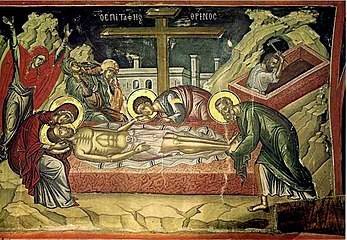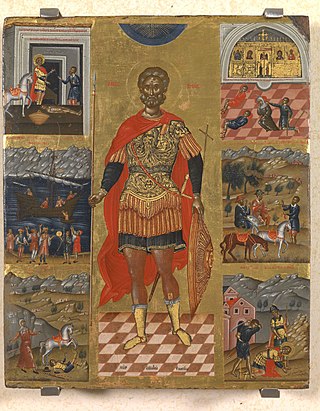
Cretan school describes an important school of icon painting, under the umbrella of post-Byzantine art, which flourished while Crete was under Venetian rule during the late Middle Ages, reaching its climax after the fall of Constantinople, becoming the central force in Greek painting during the 15th, 16th and 17th centuries. The Cretan artists developed a particular style of painting under the influence of both Eastern and Western artistic traditions and movements; the most famous product of the school, El Greco, was the most successful of the many artists who tried to build a career in Western Europe, and also the one who left the Byzantine style farthest behind him in his later career.
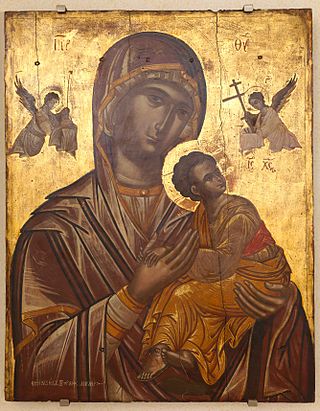
Emmanuel Tzanfournaris, also known as Emmanouil Manos was a Greek painter. He was a painter in Corfu and Venice. He was taught by famous painter Thomas Bathas. Emmanuel's father Georgios was also a famous painter. Emmanuel was active within the Greek Community of Venice until 1625. Some of his paintings are in the church of San Giorgio dei Greci. He was influenced by Michael Damaskinos and other Venetian painters. Tzanfournaris adopted the Venetian school but also stayed loyal to the maniera greca. He influenced the works of countless painters namely Emmanuel Tzanes, Franghias Kavertzas, Philotheos Skoufos and his son Theofilakto Tzanfournaris. Tzanfournaris artwork can be found all over the world. Sixteen of his paintings have survived.

Ιoannis Apakas, also known as Johann Apakass, was a Greek painter and priest, active in the later 16th and early 17th centuries. He was a popular artist during his time.
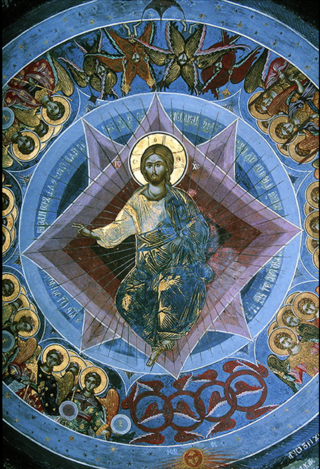
Fragkos Katelanos was a Greek painter. He specialized in icon and fresco-painting. His work resembles the Byzantine style of painting with attributes of the Cretan School. His work coincided with Theophanes the Cretan geographically and chronologically. His frescoes can be found in different parts of Greece. His signed work can be found at the Monastery of Great Lavra at Mount Athos. He is one of few Greek artists that were not associated with Venice or Crete. He mainly worked out of Ioannina. He was very popular during his time. Theophanes the Cretan was also associated with Mount Athos but he traveled back to Crete. He also spread the Cretan School to mainland Greece. Both Theophanes the Cretan, Katelanos influenced famous artist Dionysius of Fourna. Katelanos's frescos can be found all over Greece, including at Kozani, Ioannina, Kastoria and the Monastery of Varlaam in Meteora.

Markos Bathas was a painter, copper engraver, and writer. He was a prominent member of the Strelitzas-Bathas family. He may have been related to famous painters Theophanes Bathas and Thomas Bathas. Markos moved to Venice. He was the first Greek painter associated with San Giorgio dei Greci. Greek painter Michael Damaskinos was also in Venice during the 1560s. He follows the traditional maniera greca. He became a prominent member of the Greek community in Venice. Not much of his works survived. His icons can be found in Ioannina. He was an illustrator, he wrote some of the works of Plotinus. He created the works in an Italian-style text. He also created works with mythological themes.
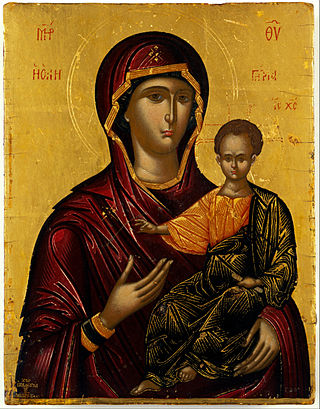
Emmanuel Lampardos, also known as Emmanouil Lampardos and Manolitzis. He was a Cretan Renaissance painter. Emmanuel and his nephew Emmanuel Lampardos have been very difficult to distinguish because they were active painters around the same period. Countless Greek and Italian artists emulated the famous painters. The name Lampardos was very notable in reference to Cretan art. The family was affiliated with famous painters Franghias Kavertzas and Tzortzi Papadopoulo. Lampardos emulated Georgios Klontzas, Michael Damaskinos, Angelos Akotantos, Andreas Pavias, Andreas Ritzos and Nikolaos Tzafouris. His style was the typical maniera greca with a strong Venetian influence. Countless images of the virgin and child have survived. Lampardos influenced Franghias Kavertzas, Emmanuel Tzanes, Philotheos Skoufos Elias Moskos, Leos Moskos, Ioannis Moskos and Emmanuel Tzanfournaris. Over fifty-six icons have been attributed to Lampardos.

Stephanos Tzangarolas also known as Stephano Tzangarola. He was a Greek painter during the late Cretan Renaissance. He migrated from Crete to the island of Corfu. He is a member of the Heptanese School and the Cretan Renaissance. His contemporaries at the time were Panagiotis Doxaras, Theodore Poulakis and Elias Moskos. His artwork began to reflect the transition of the classical maniera greca of Crete to the more refined style of the Ionian Islands. His style resembles the transition of Gentile da Fabriano and Fra Angelico from the maniera greca to their respective styles. Tzangarolas paintings influenced countless artists both Italian and Greek. Some artists that reflect his style include Spyridon Sperantzas and Georgios Kastrofylakas. His paintings can be found all over Greece mainly Athens and the Ionian Islands. Some of his work is in Cairo and London. His student was famous Greek painter Andreas Karantinos.

Antonios Papadopoulos was a Greek painter who represented the Cretan Renaissance. Papadopoulos, Andreas Pavias, Andreas Ritzos, and Nikolaos Tzafouris were all students of famous painter Angelos Akotantos. Papadopoulos reflects the sophistication and evolution of Byzantine painting to a more refined Venetian style. Although Cretan painting continued the tradition of the maniera greca, every icon reflected its own sophistication and uniqueness. Papadopoulos and his contemporaries influenced countless artists, namely Emmanuel Lambardos, Emmanuel Tzanfournaris, Thomas Bathas, and Markos Bathas. His most notable artwork is the Nursing Madonna or Galaktotrophousa. El Greco painted similar subject matter.
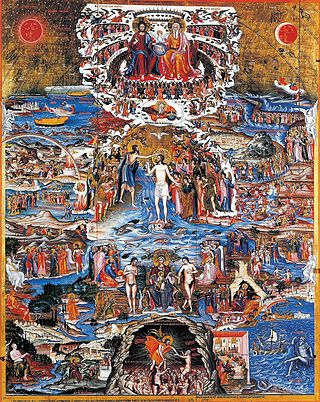
Ioannis Kornaros was a Greek painter. He was one of the few painters from Crete during the 19th century. He does not belong to the Cretan Renaissance but was influenced by the art. He is considered to be one of the foremost icon painters of the Greek Neoclassical era and Modern Greek Enlightenment in art also known as Neo Hellenikos Diafotismos. He implemented a unique style. He was influenced by Michael Damaskinos, Georgios Klontzas, Victor and other Cretan artists. He influenced Modern Greek art. He is one few Greek painters affiliated with Cyprus. Others included Ioannis Kyprios and Theodore Apsevdis. His teacher was Georgios Kastrofylakas. His most famous painting Great Art Thou resembles Georgios Klontzas's In Thee Rejoiceth.

Emmanuel Skordilis, also known as Emmanouil Skordilis. He was a Greek Renaissance painter. He was active in Crete around the time Emmanuel Tzanes, Elias Moskos, and Philotheos Skoufos were painting in Crete. He belongs to the elite group of Greek painters that followed the Venetian influenced maniera greca in Crete. Sixty eight of his works survived. He is one of few artists to not travel to the Ionian Islands and participate in the Heptanese School. He eventually settled in the Cyclades on the inland of Milos. Christodoulos Kalergis is another prominent Greek artist associated with the Cyclades, he was from Mykonos. Skordilis was influenced by Georgios Klontzas, Michael Damaskinos and Angelos. Skordilis brought the artistic style of Crete to the Cyclades and influenced countless artists in that region.

Georgios Kastrofylakas (Greek: Γεώργιος Καστροφύλακας, 1699/1705 – 1760/1770), also known as Georgios Kastrofylax or (Zorzis). He is one of the few Greek painters that remained in Crete. Others included Ioannis Kornaros. Kornaros was his student. Kastrofylakas followed the lines of the Cretan School. His work was influenced by legendary artists such as Georgios Klontzas, Michael Damaskinos and Angelos. Historians argue Kastrofylakas had many students due to the resemblance of his work. He belongs to the Neo-Hellenikos Diafotismos in painting and the Greek Rococo period. He influenced countless Greek iconographers. Thirty-six paintings are attributed to Kastrofylakas. The artist added more realism to his paintings. Most of his artwork is in Heraklion, Crete. His most notable work is the Adoration of the Magi.

Petros Lambardos, also known as Petro Lambardou or Petrus Lambardo. He was a Greek Renaissance painter from Crete. One of the earliest recorded members of the Lambardos family of painters. He comes from a famous family of painters from the island of Crete. Similar to the Bathas, Moskos, and Tzanes family. The family had many notable painters. Emmanuel Lambardos has the largest catalog of works. Two other notable painters of the same last name were Ioannis and Tzortzi Lambardos. The family were major contributors to the Cretan painting style. Three of Petros's paintings survived. The Virgin Mary painting is in Cyprus, Christ the High Priest is at the Benaki Museum and John the Baptist is in Palermo, Italy.

Nicholas Ritzos also known as Rizo and Ricio). He was a Greek Renaissance painter. His father was famous painter Andreas Ritzos. His brother was painter Thomas Ritzos. His son was painter Manea Ritzos. Nicholas and his father Andreas Ritzos are the forefathers of the Cretan School of painting. They influenced countless artists both Greek and Italian. There painting style was the typical Venetian influenced maniera greca in Crete. The island transitioned from the classical Byzantine painting to a more refined style. His contemporaries were Andreas Pavias, Nikolaos Tzafouris, and Angelos Akotantos. They influenced painters such as Michael Damaskinos, Petros Lambardos, and Emmanuel Lambardos. Nine of his works have survived.

Ieremias Palladas, also known as PouladasIeremia Pallada. He was a Greek Renaissance painter. He was a clergyman, painter, and educator. He was affiliated with Saint Catherine's Monastery in Mount Sinai, Egypt. He is one of the most notable Greek painters of the 17th century. His family consisted of clergy and painters. His nephew was Patriarch of Alexandria Gerasimos Palladas. His work was influenced by Nikolaos Tzafouris and Angelos Akotantos. Georgios Klontzas and Emmanuel Lambardos were active in Crete around the same period. Palladas influenced the works of Theocharis Silvestros, Iakovos Moskos, Ioannis Kornaros and Philotheos Skoufos. According to the Institute of Neohellenic Research, twenty-four of his works survived. His specialty was painting crosses for the iconostasis or templo. Most of his works are in Egypt.
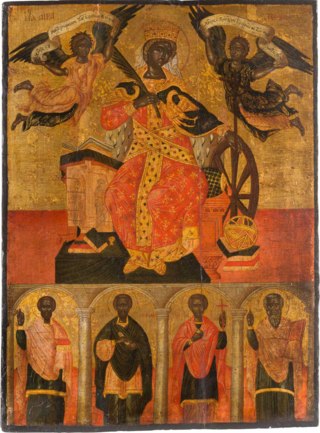
Theocharis Silvestros was a Greek Baroque painter. He was a monk affiliated with Saint Catherine's Monastery Mount Sinai, Egypt. He was also active in Heraklion Crete. He was influenced by famous painters Emmanuel Lambardos and Ieremias Palladas. Theocharis was a renowned painter of the Cretan School. He influenced countless Greek painters. He was active during the same period as Philotheos Skoufos and Franghias Kavertzas. His most notable works are of Catherine of Alexandria. Most of his remaining works are associated with Saint Catherine's Monastery Mount Sinai, Egypt. He was a Sinaitic monk.

Georgios Nomikos was a Greek painter. He converted to Christianity from Judaism. He was a Greek Baroque painter. He was a member of the Cretan school and the Heptanese (Ionian) school. His contemporaries were Georgios Kastrofylakas, Theodore Poulakis, and Georgios Markou. He shared the same last name with famous Greek painter Demetrios Nomikos. He was active on the island of Zakynthos, Kefalonia Arta and Ioannina. Six of his paintings survived. Some of his frescos have survived in the destroyed church of Saint George in Lingiades, Ioannina. His work represents an evolution from the art of Angelos Akotantos and Elias Moskos to a more refined technique influenced by the art of the Ionion Islands.

Makarios also known as Makarios of Galatista. He was a member of a family of monks that were active on Mount Athos. He is one of few Greek painters not associated with Italy, Crete, and the Ionian Islands. Makarios and his nephews Veniamin, Zakarias, and Giorgios painted frescos at the historic monastery complex. Other notable Greek painters associated with the monastery were Theophanes the Cretan and Fragkos Katelanos. His style was influenced by existing works on Mount Athos but he was also exposed to the Macedonian Palaeologan Renaissance. Most of Makarios's remaining works are at Mount Athos. His most notable work is the Nursing Madonna or Galaktotrophousa. Another notable Greek painter who painted the Galaktotrophousa was Antonios Papadopoulos.
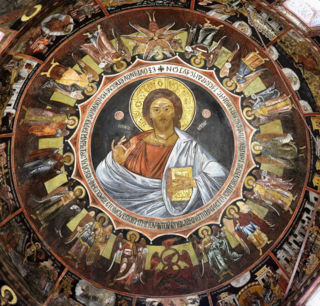
Georgios Markou also known as Georgios Markou of Argos (Greek: Γεώργιος Μάρκου ο Αργείος. He was a Greek fresco and icon painter. He was active during the Greek Baroque and Rocco periods. He was an artistic representative of the Neo-Hellenikos Diafotismos. He was one of the few Greek painters that worked outside of the Ionian Islands. Other painters that worked outside the Ionian Islands were Christodoulos Kalergis and Makarios. They were also fresco painters. Other Greek fresco painters that traveled all over Greece were Fragkos Katelanos, Theophanes the Cretan, and Frangos Kontaris. Markou was also one of the few prominent painters to have painted in Athens. His surviving works can be found all over the ancient city. He also completed works on the island of Salamina. Three icons survived and countless frescos exist at seven different sites. Some of the frescos are in very good condition. His most notable frescos are at the Monastery Faneromeni, Salamina, Greece.

Georgios Kortezas, also known as Tzortzis Kourtezas. He was a Greek baroque painter. He was a member of the Cretan School. He was from a wealthy family. Notable Greek painters active during the same period were Georgilas Maroulis, Ieremias Palladas and Theocharis Silvestros. His style was the Venetian influenced Greek mannerism with some Byzantine influence characteristic of Cretan art. Three of his works survived. The Tragedy of Saint Demetrios. The painting is at the Benaki Museum. The Archangels Gabriel, Micheal, and Raphael. Poli Museum, Corfu. Finally, George Slaying the Dragon is part of the Provatorov Collection in Geneva.
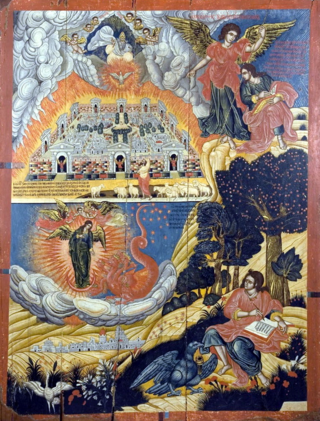
Michael Prevelis. He was a Greek painter. He was active on the island of Crete during the eighteenth century. He was one of few Greek painters still active on the island. Other painters included: Ioannis Kornaros and Georgios Kastrofylakas. His work diverged from the traditional Greek mannerism. He was a representative of the Neo-Hellenikos Diafotismos in art, he was another representative of the Greek Rococo and Baroque periods. The Greek mannerisms were reflected in iconography and other painted mediums at the time. Nine of his works have survived they are all located at the Preveli Monastery. His most notable work is the Book of Revelation.








